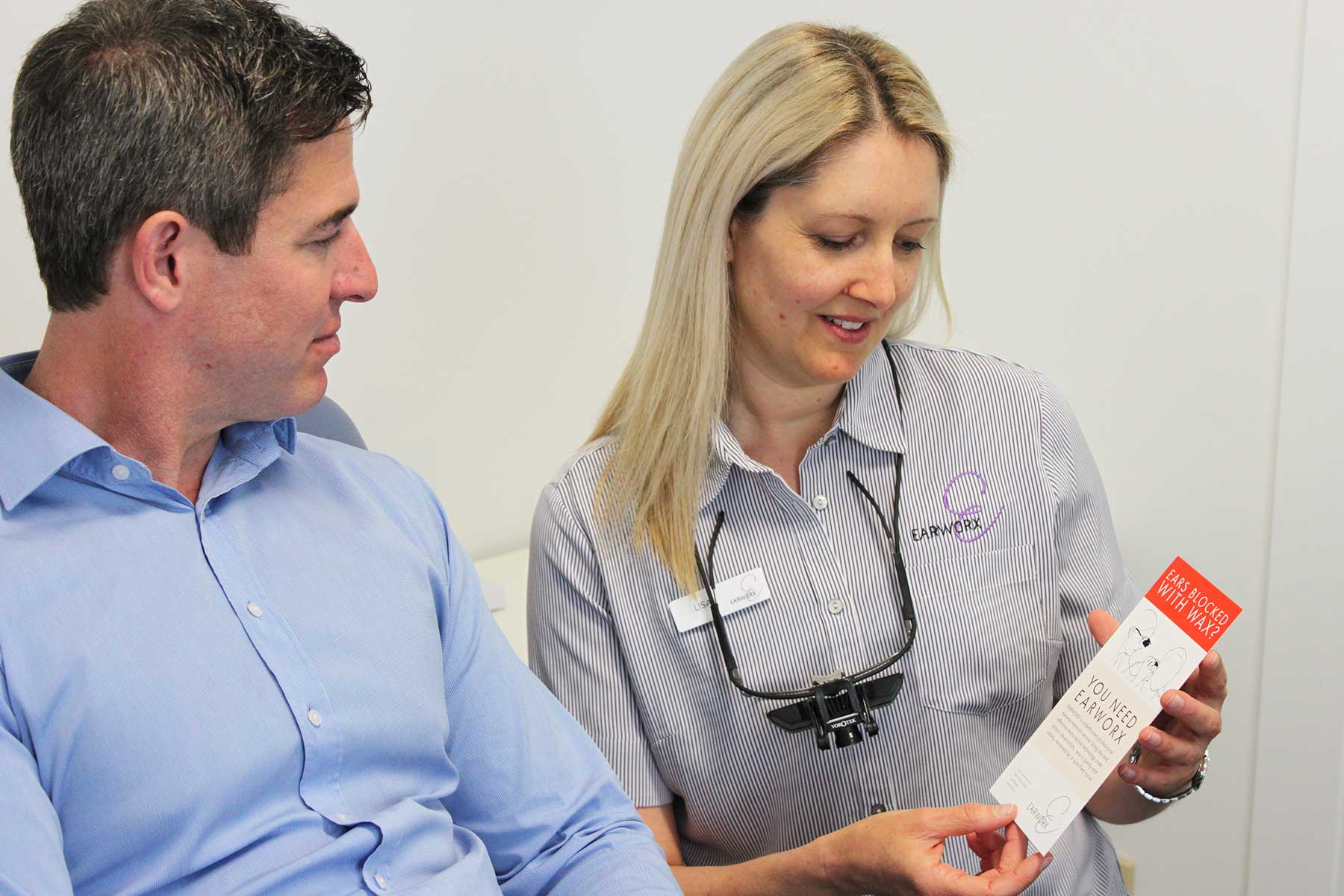To kick off the 2021 Health Minister’s Award for Nursing Trailblazers, we will be featuring each of our Finalists in the lead up to the virtual National Nursing Forum taking place from 26-28 October 2021, where the Winner will be announced.
This week, we are featuring Lisa Hellwege MACN, who has been named one of the Finalists for identifying and addressing a gap in the current health landscape through a registered nurse-led micro-suction earwax removal service.
What motivated you to establish Earworx?
I have always wanted nursing to be viewed as a profession. I have also thought deeply over the years about what the nursing body of knowledge is. Do Registered Nurses (RNs) actually ‘own’ any part the health care system? Where does the scope of medical staff and allied health professionals end and where does ours begin? Although not easy to answer, these questions have driven me to push boundaries and explore different models of care.
That’s how Earworx was born. Several disciplines out there lend themselves to a nurse-led model. I believe that as RNs, we can maximise our skills for the betterment of all within our scope of practice, to improve health outcomes for patients and relieve pressure on the Australian health care system. The RN community is vast and a strong force that is accessible by our health care system.
As with any business start-up, we undertook significant research and completed a business plan, which I based on data and numbers, and on the confidence in the public’s trust of RNs.
What are the typical health issues or potential complications that Earworx addresses?
For most, the ears are ‘self-cleaning’, but impacted ear wax is a condition found in approximately 1 in 10 children, 1 in 20 adults and over 30% of the geriatric and developmentally delayed populations1. It can cause symptoms such as hearing loss, tinnitus, fullness, itching, otalgia, discharge, odour and cough.
Earworx assists patients with these symptoms and provides an alternative where water syringing is not suitable, to remove debris related to external ear infection or to remove foreign bodies.
Where presenting symptoms do not resolve following wax removal, or for any other clinical presentations of concern, Earworx nurses refer back to the GP for assessment.

What impact has the service had?
The impact has been two-fold. Firstly, we have provided a safe and gentle alternative to more traditional methods of earwax removal; manual syringing and irrigation. These can cause major complications in approximately 1 in 1,000 ears syringed, with one medical defence organisation estimating that up to one-fifth of their medical negligence claims involving GPs are caused by ear syringing2.
In contrast, microsuction and curettage, a dry technique performed under direct observation, is suitable for those with eardrum perforations, and is the preferred method of wax removal by ENT specialists across the country.
Secondly, our clinics have freed up to 75,000 GP, ENT and Hospital Emergency Department appointments per year, reducing waiting lists and becoming part of the health care system mosaic of providers.
“I believe that as RNs, we can maximise our skills for the betterment of all within our scope of practice, to improve health outcomes for patients and relieve pressure on the Australian health care system.”
What are the key challenges you encountered?
The procedure has traditionally only been performed by ENT surgeons, so RNs have had to demonstrate appropriate levels of training and education to ensure patient safety. One of the biggest challenges undertaken, this continues to drive our standards of excellence in care. I see my role to this day as both driving and protecting these standards to ensure nurse-led models of care remain viable.
It was also challenging to ensure a commercially viable product – maintaining skill level, training, equipment and insurance can be costly. Another barrier has been getting access to government rebates (Medicare) for RNs in this industry.
Sustainability is a big part of the service – how did you go about accomplishing this?
Where possible, we reprocess our instruments and use very little consumables to reduce our environmental footprint. This bucks the trend a little as there is a wider move in health care towards single use items, but we feel the planet matters too. My grandmother (affectionately known as ‘enviro-nan’) would have been proud had she lived to see the business begin!
What does being named a Trailblazer finalist mean to you?
I am absolutely thrilled! I want to use this opportunity to inspire other nurses to follow their dreams and believe in their skills and ability to positively influence health care delivery in Australia.
RNs and midwives in Australia are educated and skilled, and a trusted resource for Australia’s health care system to harness for the betterment of patient outcomes, wait times, and overall health care system efficiency. Whether you are an RN looking at changing a model of care or exploring a more independent level of practice – I believe in you! Have confidence in yourself and your ideas – this is my message to you.
The 2021 Trailblazer Winner will be announced during the virtual National Nursing Forum taking place from 26-28 October 2021. Stay tuned for more information about how to tune in to the ceremony.
- Read about 2021 Trailblazer Finalist Julie Westaway MACN
- Read about 2021 Trailblazer Finalist Sonia Martin MACN
Nominate yourself or a colleague for the year 2022.
References
- Schwartz et al 2017, Clinical Practice Guideline (Update): Earwax (Cerumen Impaction), Otolaryngology-Head and Neck Surgery Vol 156 (IS) SI-S29
- Bird S. The potential pitfalls of ear syringing. Minimising the risks. Aust Fam Physician. 2003 Mar;32(3):150-1





